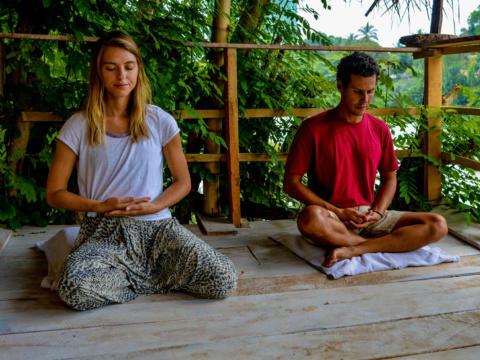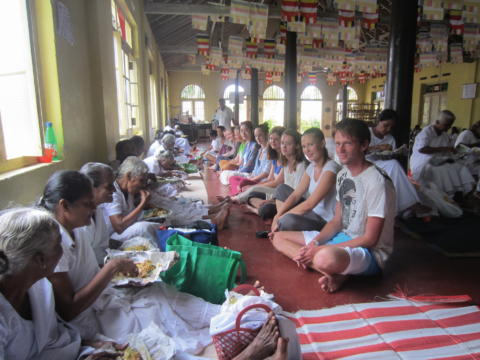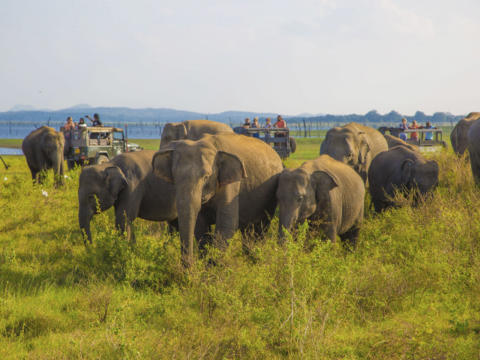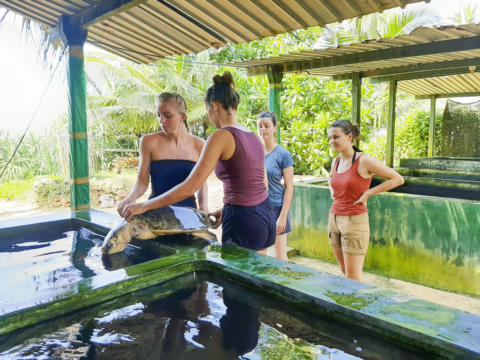Only 270€ per week!
Tribal Village Teaching
Dambana - Sri Lanka
Stay a week in tribal village in the countryside and experience the unique lifestyle of Sri Lankan indigenous people called ‘Vedda’.
Accept the challenge to go beyond your comfort zone and realize how these people live with so little. Work at an entirely exciting and different atmosphere. Share your knowledge with the kids in the village and teach them Basic English, pronunciations, vocabularies which will encourage them to learn more. The kids are always glad to meet and learn from you.
Program Description
After your introduction week, your project is to teach at a tribal village in Sri Lanka. You will stay at a house with a host family and experience the very basic yet simple life style of these people. You will teach at the village pre school where you will have a highly active and eager to learn bunch of kids to teach. You can always use teaching aids, stories and books to explain them more in a simple way. Your teaching hours will be from 8 to 12.00.
Your challenge will be to teach these kids who have had a very little exposure to English yet will be eagerly waiting for you to teach them.
Aims & Objectives
The project aims to give children at the village proper knowledge in English in order to give them a better and secure future.
Schedule
Monday to Friday
After breakfast, you will teach at the pre school from 8.00 to 12.00 where you will be engaging in the following tasks.
- Teaching English to children
- Preparing lesson plans
- Engaging in games and other interactive activities to improve their spoken and written English abilities
Note: This schedule can be changed and/or amended depending on weather conditions, local conditions and unforeseen circumstances.
Participant Criteria & Requirements
Standard Requirements
Minimum age: –
Maximum age: –
Minimum English level: Basic
CRB required: On Signup
Passport copy required: On Signup
Resume copy required: No
Required qualification: None
Additional Requirements
- Participants below the age of 18 should have parental consent.
- Participants above the age of 65 should have medical clearance.
Additional Equipment
- If you like to donate any items you think as useful for the above projects, you are more than welcome to bring those with you
- Mosquito repellent
- Personal medicines
Location
Dambana is a remote village 94 km away from Kandy which is the home for the indigenous people in Sri Lanka called Vedda. The Vedda community consists of about 300 families only in total and only live in this village. They live according to their own way of life which they have practiced for hundreds of years. They mainly survive by farming and hunting. Though this community has been influenced by the outside main culture of Sri Lanka, they are still striving to preserve their traditions and unique lifestyles.
About the Accommodation
You will be accommodated in a traditional homestay located in Dambana village. The facilities will be basic, where the participants will be able to see the way of life in this tribal village.
Food Arrangements
You will be provided with three meals a day on weekdays and two meals per day on weekends. The meals are mainly Sri Lankan food, consisting mainly of vegetarian dishes including rice and vegetables.
Facilities
Our homestay accommodation is located in a village where there are no supermarkets or restaurants.
Activities & Events
No scheduled activities outside the program.
Sights & Surroundings
During weekends you can visit many places and sites in the central highlands in Sri Lanka which can be reached from Dambana.
Transportation
From this location we do not provide free transport to other locations.
Quick Facts
Name: Democratic Socialist Republic of Sri Lanka
Population: 20 million
Capital: Sri Jayawardenepura Kotte and Colombo
Language: Sinhalese, Tamil
Currency: Sri Lankan Rupee (LKR)
Time zone: UTC +5:30
Country Information
Sri Lanka’s over 2000 years of history and culture can still be seen in every corner of its cities and the details of its ever-beautiful ancient temples. With eight UNESCO World Heritage sites and its short distances between the main sights, Sri Lanka is a country that, despite often being overlooked in itineraries, has left travelers filled with awe.
Visit the sacred home of the world’s oldest living tree in Anuradhapura, wander around the colonial architecture of Colombo, get sun-kissed at the untouched beaches that enclose the territory, snorkel in the crystal-clear waters, head to the hills for a cooler temperature and get surrounded by lush natural vegetation, visit two thousand year-old temples or get overawed at the sight of hundreds of elephants in Minneriya.
While traveling through Sri Lanka you will experience adventures from the highest and chilliest mountains like the famous Adam’s Peak – a stairway mountain considered sacred in three different religions, through the elephant shelters, to the most peaceful beaches up north near Trincomalee and their tiny- one floor- hostels facing the calm sea.
Climate
Sri Lanka is one of the best destinations to visit year-round as the rainy seasons hit the island in opposite locations at different times of the year. That being said, Sri Lanka is a country that can be visited if you know where to go in search for the best weather.
Southwest
The southwest monsoon hits between May and September and the dry season occurs from December to March.
North and coastal regions
The monsoon season happens between October and January while the dry seasons takes places between May and September.
Culture
Sri Lanka is known for its distinct cuisine, indigenous holistic medicines, cricket practices and prestigious export of tea, cinnamon and gemstones. Moreover, the country boasts of a rich artistic tradition which includes music, dance and the visual arts.
Sri Lanka has been shaped by many aspects. The first and most obvious being the heritage of Theravada Buddhism passed on from India. Furthermore, the colonial period left a big mark in the country’s traditions and culture, with British elements being featured in every corner as well as Dutch and Portuguese elements.
Sri Lanka, better known as the “nation of smiling people”, is a paradisiac island that Napoleon described as a world-like biodiversity in a tiny piece of land on the Indian ocean. Multicultural, multi-religious and multi-coloured country, formerly named Ceylon, is known for its delicious black tea, it’s heartwarming inhabitants and its history-filled corners.
The festival of Duruthu celebrates the Buddha’s first visit to Sri Lanka. During Duruthu, thousands of people attend colorful parades, which consist of three processions on the nights before the full moon. The processions consist of fireball performers, drummers, dancers, decorated elephants and the most important – a gigantic tusker treading a white carpet.
On April 13th or 14th Avurudda celebrates the Sinhalese New Year. According to Sinhalese astrology, the new year begins when the sun changes from Meena Rashi (Pisces) to Mesha Rashi (Aries).
During June the Poson Festival takes place on the full moon day of June and celebrates the arrival of Buddhism, which occurred when Arahat Mahinda, the son of the emperor of India, converted King Devanampiyatissa to Buddhism.
During October or November, Diwali the Festival of Lights is celebrated. Diwali is an ancient Hindu festival that signifies the victory of light over darkness, knowledge over ignorance, hope over despair, and good over evil. It is celebrated with millions of lights shining over houses, temples, and buildings. Diwali is celebrated between mid-October and mid-November, on the darkest, new moon night of Karitika.
In Sri Lanka, it is tradition to take an oil bath in the morning, wear new clothes, exchange presents and sweets and visit the Koil, a Hindu Temple. In the evenings, oil lamps are lit to invite the blessings from the goddess of wealth.
Transportation
Plane
Flying between major locations in Sri Lanka such as Galle, Colombo, Nuwara Eliya and others is possible with Aero Lanka and Srilankan Airlines. Moreover, Srilankan Airlines runs small seaplanes, which give you a great aerial view of the island.
Bus
Buses are a option to get around Sri Lanka, albeit quite uncomfortable. For instance, for less than a Euro you can get almost halfway around the island in a bus without air conditioning. Luxury buses with air conditioning also exist at a higher price which are still very inexpensive.
Train
Sri Lanka boasts of an extensive railway system that will get you almost anywhere around the country. Moreover, Sri Lanka is known for its picturesque scenery that can be best viewed in a train journey. In fact, there are observation carts in most trains for tourists that will allow you to better take in the beauty of your surroundings.
In most cases, getting around by train is the cheapest option. There are three classes: 1st, 2nd and 3rd class. In most Intercity and Express trains, however, only 1st and 2nd are offered. Do keep in mind that trains from one popular destination to another (i.e. Colombo – Kandy or Galle – Colombo) often get overbooked, so it is best to reserve a seat much in advance.





